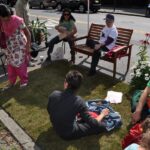According to recent research from a collaboration of public policy, advocacy and economic research organizations, 23 states in the United States built 7.3 million too few housing units between 2000 and 2015. The biggest deficit was in California, where fast job growth has attracted millions of new residents and metro areas up and down the coast have failed to keep pace with housing demand. But housing shortages were documented all across the country, from the Sunbelt to the Midwest to the Northeast. As the authors note, “such a shortage restricts economic growth, raises rents and housing prices, hurts quality of life, and has negative impacts.”
If there is such a huge unmet demand for housing, then why aren’t we building enough housing? Several key factors limit housing availability. Land and labor costs can make it prohibitive in many markets to build all but the most expensive housing. However, state and local regulations and community opposition that has become part and parcel of the entitlement and development review process are the biggest reasons why we don’t have enough housing in the places where there is the most demand, particularly in the most economically productive regions.
The solution seems easy then. Change land use and zoning regulations to allow more housing. For example, allow four-plexes as of right in neighborhoods historically zoned for single-family detached homes like Minneapolis is considering. Intentionally plan for high-intensity development in areas well-served by transit, as exemplified by the Rosslyn-Ballston corridor in Arlington, Virginia. Create a process such that multifamily residential can be fast-tracked in areas that are not meeting housing targets.
But changing land use and zoning regulations to allow more housing is almost never easy, and there are lots of things that need to be considered above how to change specific language in a zoning ordinance.
It is critically important to understand and respond to community opposition to (and fear of) change.Bring together opponents to change–no matter how disparate the issues they represent–and provide an opportunity for dialogue. It is essential for there to be local political leadership willing to be out front.Policies and regulations to increase housing supply should be made jointly with decisions about transportation and transit, schools and economic development.Solutions must be consistent with a shared vision developed with broad community input.
Even if we know a key solution to the housing crisis is to change land use and zoning to allow more housing, the local process for getting to those changes will determine whether there will be sustainable impacts on housing availability and affordability.
What do you think? How important is process relative to policy? I’d love to hear from you!





